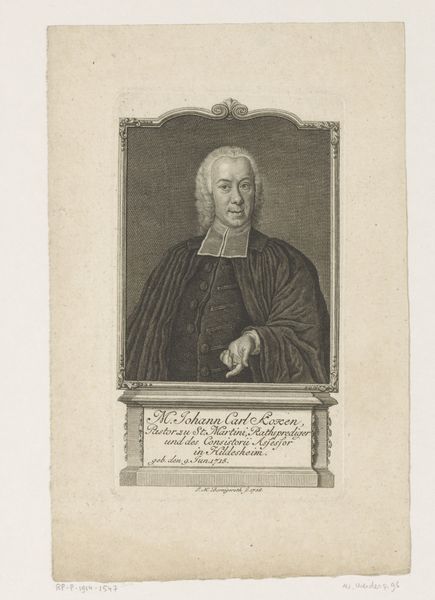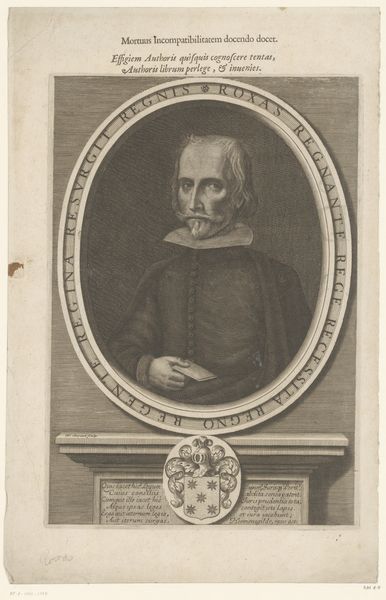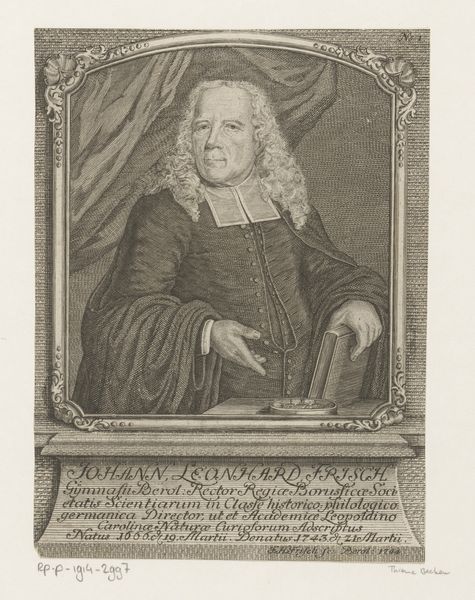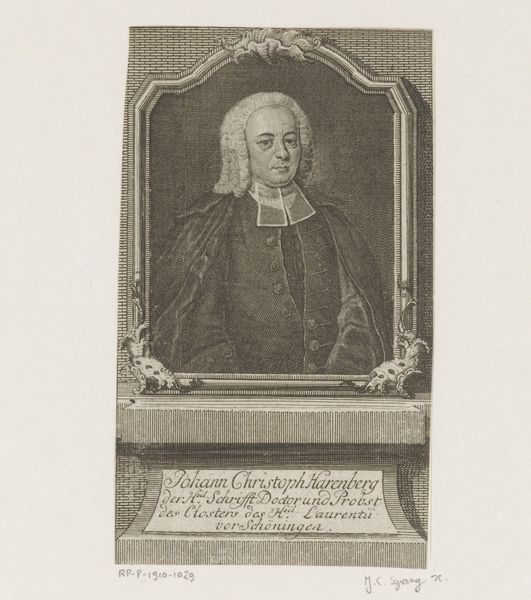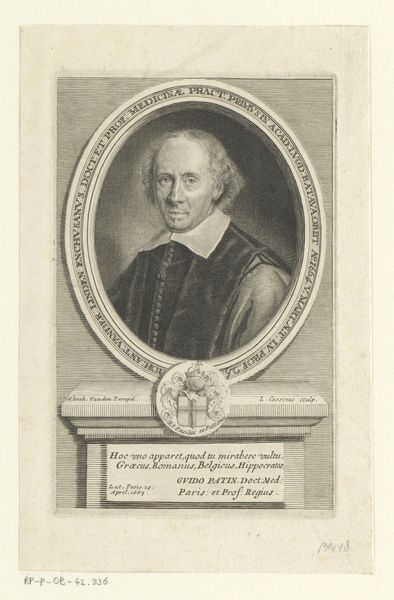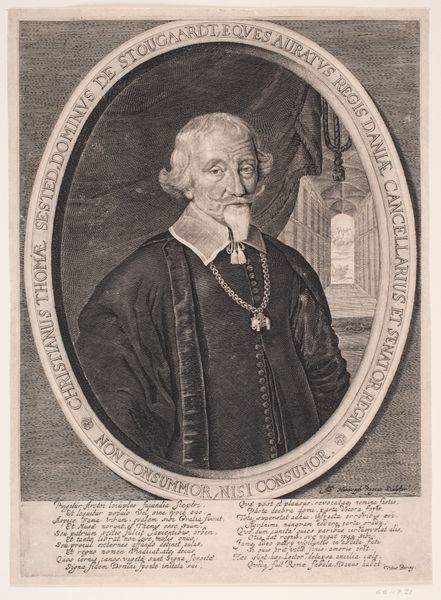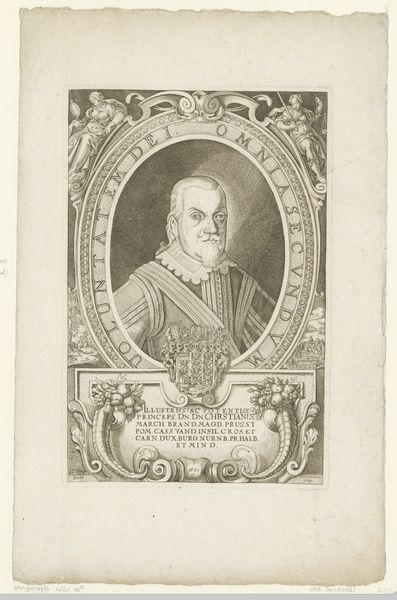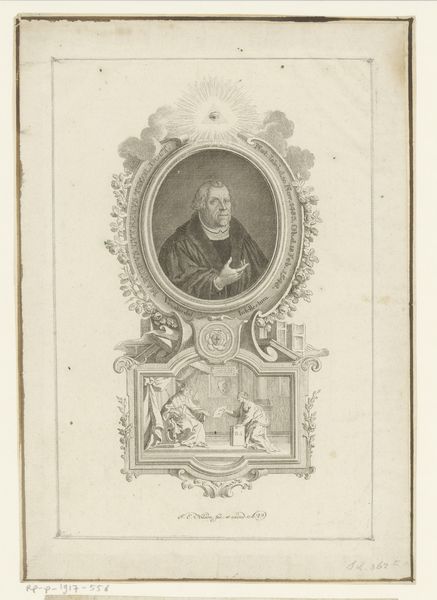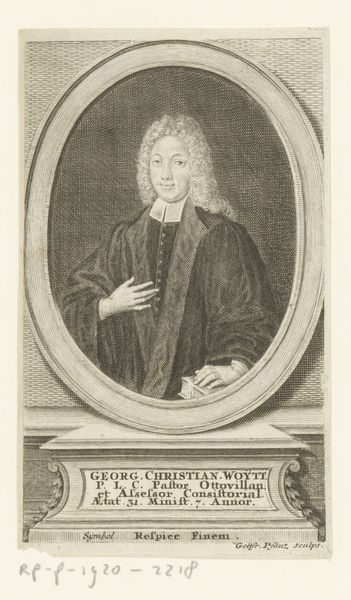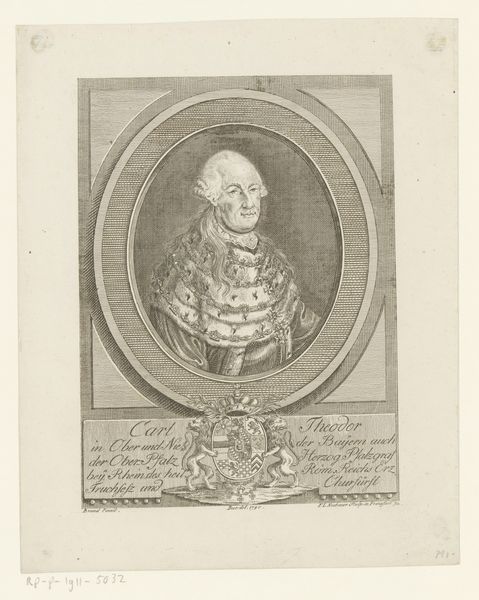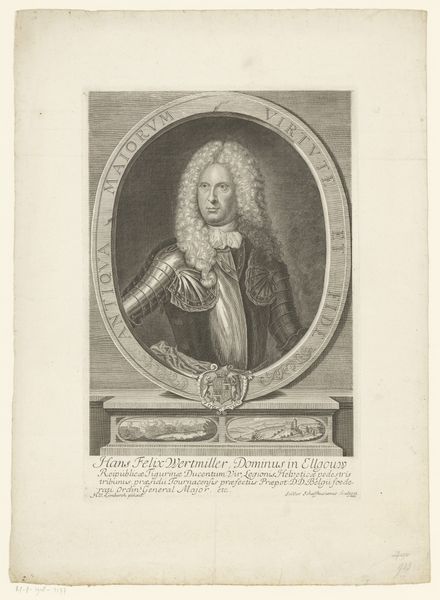
Dimensions: height 151 mm, width 85 mm
Copyright: Rijks Museum: Open Domain
Curator: Let’s take a look at "Portret van Christoph Ignaz von Gudenus." It’s an engraving that dates sometime between 1733 and 1789, currently held here at the Rijksmuseum. The artist is Georg Heinrich Werner. Editor: The fellow in this portrait looks… intense, wouldn’t you say? Those eyes bore right through you. The delicate lines in the engraving only emphasize the lines on his face—like a roadmap of a life lived with conviction, or maybe a lot of bureaucratic stress? It makes me wonder about his daily life. Curator: Indeed. Christoph Ignaz von Gudenus wasn’t just anyone. The inscription details his rather impressive titles: Bishop, Vicar General, Councilor. He was, effectively, a man of considerable religious and academic power, linked to the University of Erfurt. That expression you’re noticing could very well stem from the weight of those responsibilities, situated as he was within the religious and political complexities of his time. Editor: Makes me wonder, what did he *really* think about the people he oversaw, and the positions he held? I mean, if you were to grab coffee with him… would he gossip about church politics or quote scholarly texts from the original Latin? And how would he feel being displayed here in our era? I am sure his perspective of power, gender, race etc, might have some significant contrast compared to current times. I mean I see those lips pursed like he has some spicy opinions locked away. Curator: Your questions underscore a crucial point: How portraits, particularly those of figures of authority, serve as constructed representations of power. Von Gudenus is presented here in a very particular way, intended to convey authority and piety. He stands within broader baroque strategies that visually reinforced existing social hierarchies. And the interesting juxtaposition lies with the chosen method, Print, to replicate this image; it inherently carries a dissemination effect for its subject in the era. Editor: True, the whole staging is carefully crafted. Even that decorative oval frame seems designed to contain his importance, to elevate him and to place him above the masses. Although for our eyes, the ornate detail seems quaint or almost… I don’t know… whimsical! Which brings a certain sense of humanity or "being-down-to-earth". Funny, right? He's forever frozen, preserved and presented to modern onlookers through the work and interpretations of a much-later generation. Curator: Absolutely, these historical portraits open so many intriguing paths for exploration; it makes you wonder about these intersectional power dynamics across temporal spaces. Editor: Yes indeed. Thank you for walking with me in understanding those dimensions in art.
Comments
No comments
Be the first to comment and join the conversation on the ultimate creative platform.
